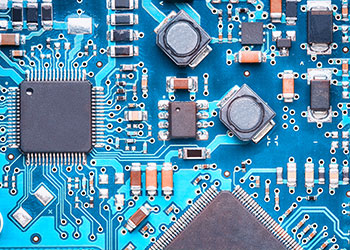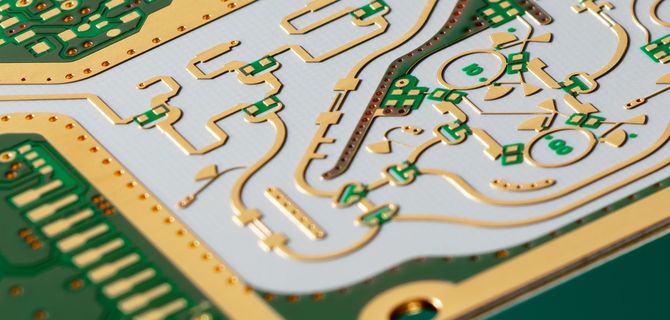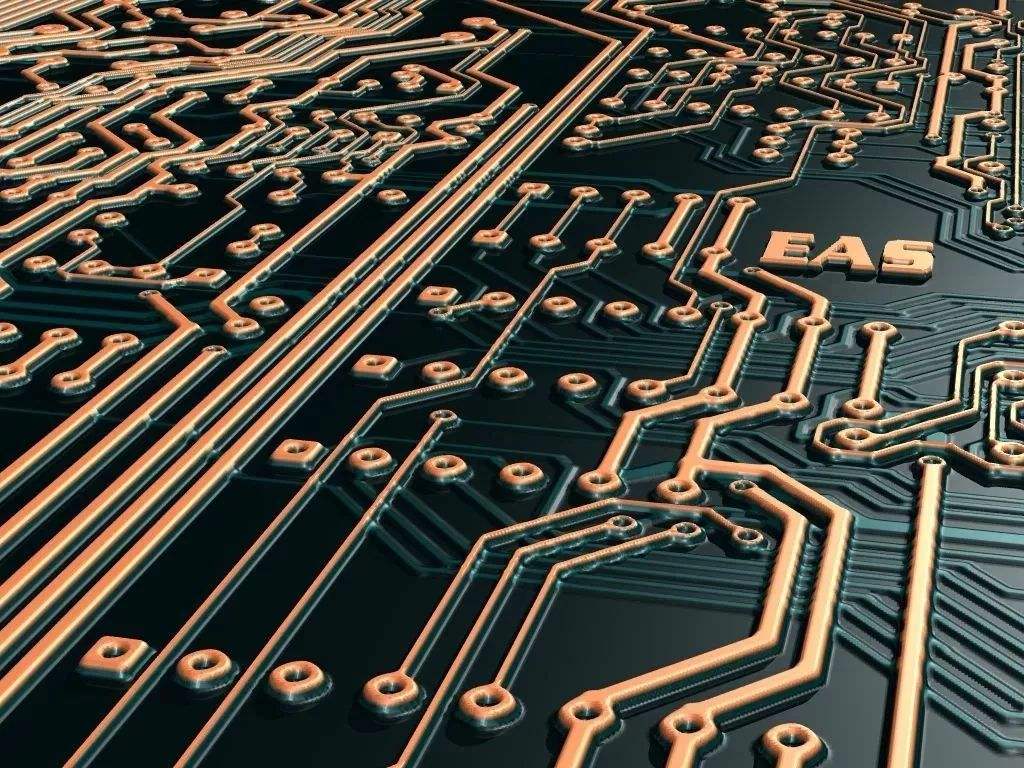
Explain the key points of PCB design and the power requirements of switching power supply
In any switching power supply design, the physical design PCB is a link If the design method is improper, the printed circuit board may emit excessive electromagnetic interference, which may cause unstable power operation The following is an analysis of the key points to be noted in each step:
1. Design process from schematic diagram to PCB
Set component parameters ->Input principle netlist ->Design parameter settings ->Manual layout ->Manual routing ->Validate design ->Review ->CAM output.
PCB board

2. Parameter setting
The spacing between adjacent conductors must meet the requirements of electrical safety. In order to facilitate operation and production, the spacing should be as wide as possible. The spacing shall be at least suitable for the voltage. When the wiring density is low, the spacing of signal lines can be appropriately increased. For signal lines with high and low level differences, the spacing should be as short as possible, and new spacing should be added. The distance between the inner hole edge of the pad and the edge of the printed board shall be greater than 1mm to avoid defects of the pad during processing. When the wire connected to the pad is relatively thin, the connection between the pad and the wire is designed as a water drop. The advantage is that the gasket is not easy to peel off, but the wire and gasket are not easy to disconnect.
3. Layout of components
Practice has proved that even if the circuit schematic is correctly designed and the printed circuit board is improperly designed, the reliability of electronic equipment will be adversely affected. For example, if two thin parallel lines of the printed board are close together, there will be a delay in the signal waveform, resulting in reflective noise at the end of the transmission line. The interference caused by power supply and grounding wire will reduce the efficiency of the product. This, when designing the printed circuit board, pay attention to the correct method. Each switching power supply has four current circuits:
1) Power switch AC circuit
2) AC circuit of output rectifier
3) Input signal source current loop
4) Output load current loop The input loop charges the input capacitor through an approximate DC current, the filter capacitor mainly plays the role of broadband energy storage; Similarly, the output filter capacitor is used to store high-frequency energy from the output rectifier and eliminate the DC energy in the output load circuit Therefore, the terminals of input and output filter capacitors are very important The input and output current circuits can only be connected to the power supply from the terminal blocks of the filter capacitor If the connection/output circuit between inputs and the power switch/rectifier circuit cannot be directly connected to the terminal of the capacitor, AC energy will pass through the input or output filter capacitor and radiate to the environment The AC circuit of the power switch and rectifier contains high amplitude trapezoidal current, high order harmonic components, and the frequency is much higher than the fundamental frequency of the switch The peak amplitude can reach 5 times of continuous input/output DC current The transition time is usually about 50ns For double circuits vulnerable to electromagnetic interference, the power supply in other printed circuits must be laid in front of these AC circuits. Each circuit has three main components of filter capacitors, power switches or rectifiers, inductors or transformers, which should be placed adjacent to each other. Adjust the current path between component positions to make it as short as possible The design process is as follows:
1) Place the transformer
2) Design the power switch current loop
3) Design the output rectifier current loop
4) Control circuit connected to ac power circuit
Design the input current source Loop and input Filter Design the output load loop and output filter According to the functional units of the circuit, the layout of all the components of the circuit should comply with the following principles:
1) The PCB size should be considered first. When the PCB size is too large, the printing line is very long, the impedance increases, the noise resistance decreases, and the cost increases The heat dissipation is too small, and adjacent lines are vulnerable to interference The circuit board is rectangular with a length ratio of 3:2 or 4:3. The distance between the components at the edge of the circuit board and the edge of the circuit board is generally not less than 2mm
2) Place the device to consider the future welding
3) To the components of each functional circuit as the center The components shall be uniform, neatly and compactly arranged on the PCB, and the wires and connections between components shall be minimized and shortened. The decoupling capacitance shall be as close as possible to the VCC of the device
4) For circuits working at high frequencies, the distribution parameters between components should be considered In general circuits, components shall be arranged in parallel as far as possible With this kind of pipe, it is not only beautiful, but also easy to install, weld and mass produce
5) Arrange the position of each functional circuit unit according to the circuit process, so that the layout is convenient for signal flow, and keep the signals in the same direction as far as possible.
6) The first principle of layout is to ensure the distribution rate of wiring. When moving equipment, pay attention to the connection of flying wires and put the connected equipment together.
7) reduce the loop area as far as possible to suppress the radiation interference of switching power supply.
4. Wiring
The switching power supply contains high-frequency signals, and any printed line on the PCB can be used as an antenna. The length and width of the printed circuit will affect its impedance and inductive reactance, thus affecting the frequency response. Even the printed circuit passing through the DC signal may be coupled with the RF signal of the adjacent printed circuit, which may cause circuit problems (or even re radiate interference signals). This means that all components connected to the printed circuit and other power lines must be closely placed together. The length of the printing line is proportional to its inductance and impedance, and the width is inversely proportional to its inductance and impedance. The length reflects the wavelength of the print line response. The longer the length is, the lower the frequency that the printing line can send and receive electromagnetic waves, and the more radio-frequency energy it can radiate. According to the current of the printed circuit board, increase the width of the power line as much as possible to reduce the resistance of the circuit. At the same time, make the power line, ground wire and current in the same direction, which helps to enhance the anti noise ability. Grounding is the bottom branch of the four current circuit of switching power supply. As the common reference point of the circuit, it plays a very important role and is an important method to control interference. The grounding cable shall be carefully considered in the layout. Hybrid grounding cables may cause power supply instability.
Attention shall be paid to the following points in the design of grounding cable:
1) Correct selection of single point grounding in general, the common side of the filter capacitor shall couple the other grounding to the contact with large current, and the grounding shall be close to the circuit, while the corresponding circuit filter capacitor can also be placed on the level ground, mainly considering that the current part is grounded, and the circuit is changing. The interference is introduced because the actual impedance of the circuit will cause the ground potential of each part of the circuit to change In this switching power supply, its inductance has less influence between wiring and components, while the grounding circuit has greater influence on the formation of circulating current interference. In addition, single point grounding is used, The power switch current loop (in the ground of several devices are connected to the ground on his feet), the grounding of the output rectifier current loop of several devices also receives the corresponding filter capacitor grounding. With this kind of pipeline, the power supply works stably and is not easy to self excite. It is impossible to do this at all. In fact, two diodes or a small resistance in total can be connected to a more concentrated copper foil
2) The bold grounding line as far as possible If the ground wire is very thin, The width of the grounding wire should be greater than 3 mm. It can also be used as a large area copper layer of the grounding wire. On the printed board, it is not used as a ground wire to connect with the ground The following principles should also be followed:
1) Wiring direction: from the welding surface, the layout of components should be consistent with the schematic diagram as much as possible, and the wiring direction should be consistent with the wiring direction of the circuit diagram, because in the production process, it is usually necessary to detect various parameters of the welding surface, so it is easy to do in the production inspection, debugging and maintenance (note: Refers to meet the circuit performance and machine installation and panel layout requirements under the premise.
2) When designing the wiring diagram, the line should turn as little as possible, the line width on the printed arc should not be changed, and the wire corner should be greater than 90 degrees, so as to make the lines concise and clear
3) The printed circuit is not allowed to have crossed circuits. The possible crossed circuits can be solved by "drilling" or "winding". That is to say, let a lead "drill" from the bottom of the gap of other resistors, capacitors, transistors, or "wind" from the intersection of a lead. Under special circumstances, how complex the circuit is. In order to simplify the design, wire bridging is also allowed to solve the problem of cross circuit. Due to the use of a single panel, the tandem assembly is located on the top and the surface mounted equipment is located on the bottom. During the layout, the tandem assembly can overlap the surface mounted equipment, but the use of pads should be avoided. The input and output switching power supply is low-voltage DC-DC, which echoes the output voltage back to the primary transformer. There should be a common reference on both sides of the circuit. After laying copper wires on the ground wires on both sides, they should also be connected together to form a common ground
5. Check
After the wiring design is completed, it is necessary to carefully check whether the designer's wiring design conforms to the rules. The rules also need to confirm whether it conforms to the requirements of PCB production process. Generally, check whether the distance between wire to wire, wire to component pad, wire to connecting hole, component pad to connecting hole, through hole to through hole is reasonable and meets the production requirements. Whether the width of power line and ground wire is appropriate, and whether there is space for widening ground wire in PCB. Note: Some errors can be ignored, for example, some contours of some connectors are placed outside the rack, and the inspection spacing is wrong; In addition, copper must be recoated every time wiring and holes are modified. Review according to the "PCB checklist", including design rules, layer definition, line width, spacing, pad and hole settings, and focus on the rationality of equipment layout, power supply, grounding grid wiring, high-speed clock network wiring and mask, and decoupling capacitor placement and connection.
Notes for output light drawing files:
a. Need to output layer wiring layer (bottom), screen printing layer (including top screen printing, bottom screen printing), welding layer (bottom welding), drilling layer (bottom), in addition to generate drilling file (NC Drill)
b. When setting the silk screen layer, do not select the part type Select outline, text, and Linec for the top (bottom) and Silk screen Layer When setting the layers of each layer, select the board contour When setting the silk screen layer, do not select the part type, and select Outline, Text and Line of the top (bottom) and silk screen Layer D. Do not change the default setting of the power supply when PCB generates drilling files







